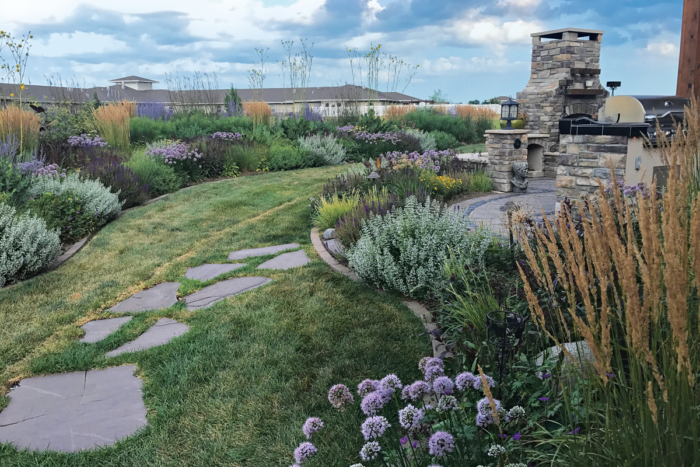
Seven years ago a couple in Carroll, Iowa, built the backyard of their dreams—or so they thought. It included an outdoor kitchen, a fireplace, a patio, and a hot tub. But they quickly discovered that it was missing something huge: privacy. When I showed up, they told me they wanted to feel less exposed in their backyard. My answer was simple: a garden.
When they are looking for privacy, most people think first about planting a hedge. Hedges can be nice if you’re looking to create a very private area, but they are not always necessary. I wanted to keep the extended view from the existing property without closing it off. By choosing an alternative to a hedge, I was looking to create a more playful atmosphere without making the space feel small and enclosed. To solve the problem, I designed a large bed and filled it with plants in a way that would create screening where it was most needed.
An island bed mimics a berm and screens the yard
To provide privacy, I suggested creating an island bed that would look like it had been built on a berm at the edge of the property. This large display would be distracting to drivers passing the property and would create privacy for homeowners sitting on the patio beyond. The angled bed was about 75 feet long and 15 feet wide. The impressive size was important. A lot of people don’t make island beds large enough. They usually add some trees and surround them with plants for a few feet in each direction. By creating a longer and wider bed, you can actually make a space feel much larger and less suffocating. That was especially true in this case. The island bed I planted anchored the corner of the property in a substantial way. There was an empty lot directly behind the couple’s property that exposed their outdoor oasis to the busy adjacent road. Adding this large extended island helped detract from the entertainment space and make the atmosphere more intimate.
To create the garden bed, we first killed the grass but left it in place and planted straight into it. This kept the existing soil profile intact. Most people would use a sod cutter to remove the turf, but that removes the richest top 2 inches of soil. The dead turf acted as a mulch layer, helping to retain moisture and prevent erosion.
A lot of people think they need to add a mound of soil to garden beds if they want to increase the height, and I am often asked how I created the look of a berm in this landscape without doing that. I simply used the natural forms, textures, and heights of different plants to create natural undulation in the planting itself to give the illusion of a berm.
Create movement by layering plants of different heights
Within the bed, I arranged the plants in a 360° fashion—in other words, tall plants were put in the middle of the berm, medium-size ones were sandwiched between those tall ones, and short plants were placed around the entire circumference. That led viewers to assume that this bed was an actual berm. But to make things look more natural, I occasionally added some large plants to the edge of the bed. Gardens don’t have to be layered from short in the front to tall in the back. Having unexpected spots of height dotted in small groups or individually in the otherwise smooth pattern of the design helped with that natural undulation effect.
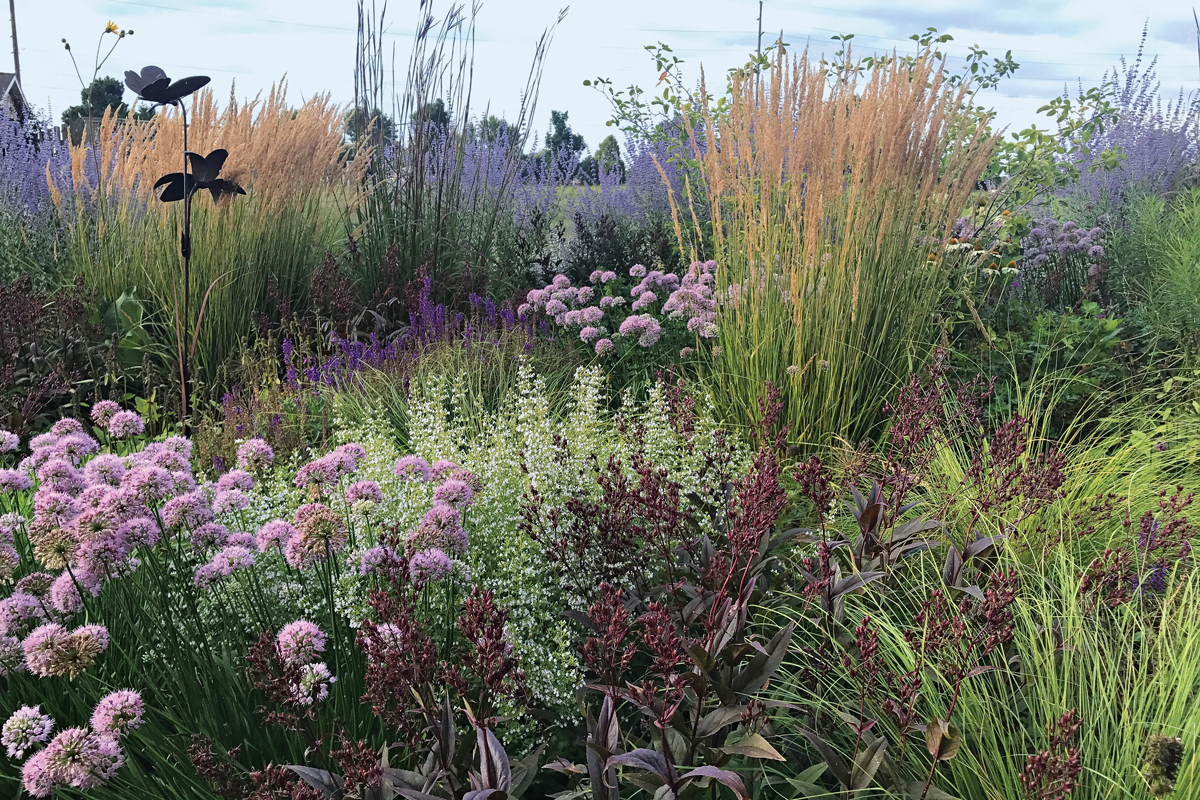
To anchor the design, I first added a large shrub, ‘Autumn Brilliance’ serviceberry (Amelanchier × grandiflora ‘Autumn Brilliance’, Zones 4–9), as the main focal point of the bed. Next, I added a stylized perennial meadow layer that would have interest in all four seasons. The two central grasses in this layer were ‘Karl Foerster’ feather reed grass (Calamagrostis × acutiflora ‘Karl Foerster’, Zones 5–9) and ‘Dancing Wind’ big bluestem (Andropogon gerardii ‘Dancing Wind’, Zones 3–9). They made the garden look more playful and would lead a wandering eye through the planting. Scattering them throughout the bed added punctuation and height, which helps to make the garden feel large and diffuses the imposing effect of the ‘Autumn Brilliance’ serviceberry screen. I also sprinkled another ornamental grass, prairie dropseed (Sporobolus heterolepis, Zones 3–9), around the bed to soften the planting with its fine-textured tufts. It’s important to add grasses to garden beds for movement. Visually, they offset the effect of loud plants with lots of color and seasonal interest that may currently be having their moment.
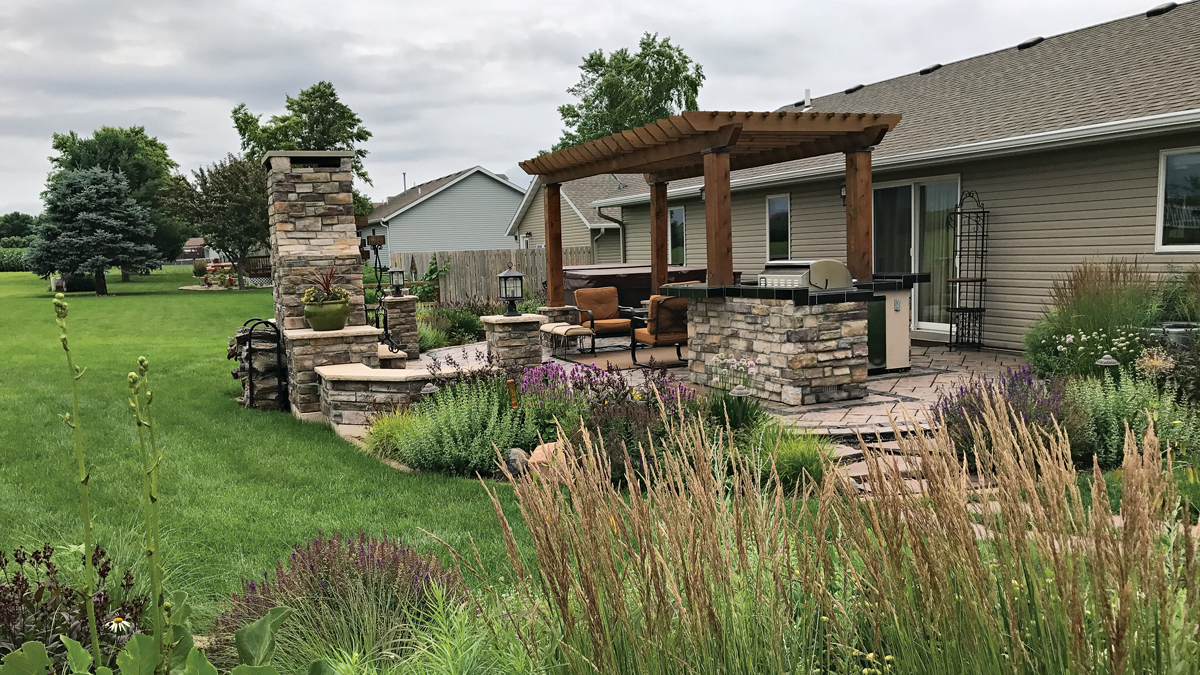
Around the patio, there was only a 3-foot barrier for planting (photo above). In this location, I used plants that were similar to those I used in the island bed, but I was restrained in my choices and kept the plant palette smaller. I also adopted a similar approach to layering the plants as I did in the island bed, but I used shorter plants so that the view to the berm would not be obstructed. I chose plants that were smaller than 36 inches tall at full height, such as Eastern bee balm (Monarda bradburiana, Zones 5–8), autumn moor grass (Sesleria autumnalis, Zones 5–8), and ‘Hummelo’ betony (Stachys officinalis ‘Hummelo’, Zones 4–8). Having the larger island planting in the background of this smaller patio garden helped add a lot of depth and dimension.
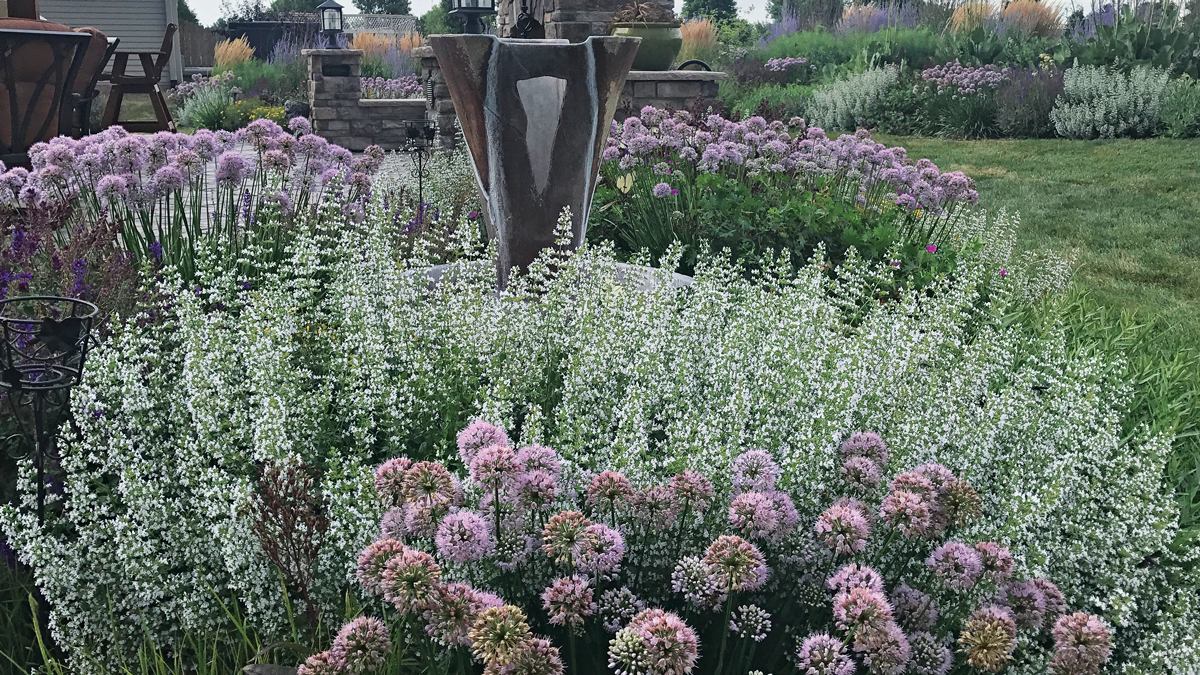
Choose plants with four seasons of appeal
Although I worked mostly with perennials in filling the garden beds, they were perennials that looked good even in winter. I added multiseasonal color with small groupings of plants, ones that would bloom throughout the year and would not need any extra deadheading or pruning. Depending on the scale of garden you’re creating, it’s important to add groups of flowering selections for each season to get greater visual impact and make the garden blend in more seamlessly with the natural surroundings. In the island bed, I planted ‘Hummelo’ betony and ‘Summer Beauty’ allium (Allium ‘Summer Beauty’, Zones 4–9) in groupings of three to five. These plants look stunning in full bloom and later in fall and winter.
Remember that spent blooms of plants have a beauty and a purpose as well. Plants with pronounced seed heads contribute important texture and help feed wildlife. Bringing birds and other critters to the garden provides added entertainment to gardeners as well.
Four-season garden beds also bring an important benefit to properties that people often forget about—the view from inside the house. There are times, especially in winter, when you don’t have the ideal weather for sitting outside, but by adding year-round seasonal interest and depth to your garden, you can continue to enjoy the plants and their accompanying wildlife from the warmth and comfort of your home.
| Behind the scenes |
How to get a layered bed
The design of this garden began with breaking the planting process down into three steps.
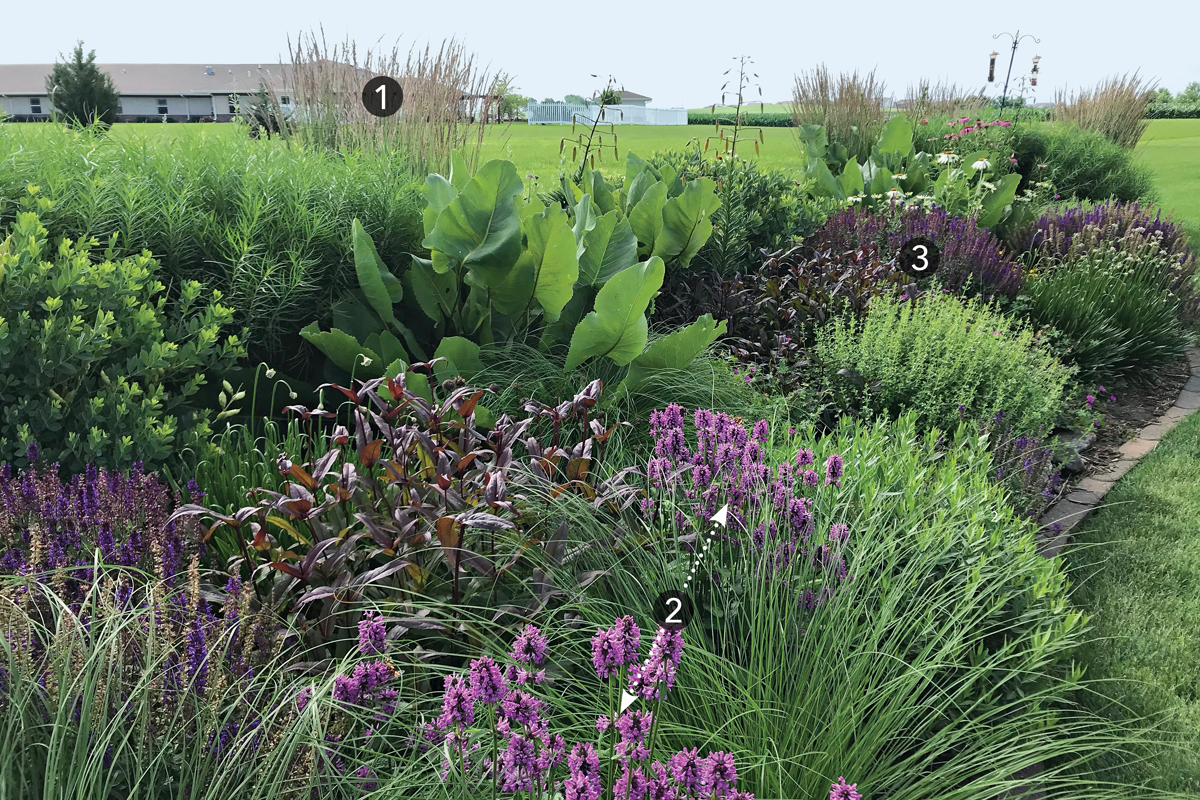
- Place foundational plants first. These selections went into the center of the island bed. They included large perennials such as ‘Purple Smoke’ baptisia and tall grasses such as ‘Karl Foerster’ feather reed grass.
- Group selections for greater impact. It’s important to use small groupings of plants to create a more noticeable show. Many people are used to seeing garden beds with a messy scattershot of individual plants vying for attention or single plants kept 3 feet apart by oceans of mulch. Small groupings made up of many of the same plant create a more formal, tidy, and aesthetic impact.
- Fill in with multiseason stars. It was critical that the beds have interest all year long. Traits such as flowers, foliage, seed heads, and fragrance are key when thinking about multiseason appeal. Some of these filler plants included white coneflower (Echinacea purpurea ‘Alba’, Zones 3–9), which flowers in summer and has seed heads that persist in fall and winter, as well as ‘Wesuwe’ salvia (Salvia ‘Wesuwe’, Zones 3–8), which can flower multiple times throughout the year.

A dense, layered garden design reduces maintenance
Having a full, densely planted faux berm like this one helps create a lower-maintenance garden. How? When plants grow against one another, they create a plant community, like in nature. Every plant in this garden has its role. Large, structural plants such as ‘Purple Smoke’ baptisia (Baptisia ‘Purple Smoke’, Zones 3–9) have mounding forms and upright habits. Filler plants, such as Eastern bee balm, are planted in areas between the structural plants. Lastly, ground covers such as lesser catmint (Calamintha nepeta subsp. nepeta, Zones 4–9) cover the ground under plants that may not have basal foliage to help suppress weeds. Because less sunlight is able to reach the soil between closely growing plants, fewer weed seeds germinate. However, it’s important to be sure that the garden is fully weeded in the spring before the plants leaf out completely and cover the soil. After this initial spring maintenance, only a few individual weeds may pop up throughout the season.
If the weeds are taken care of early in the season when they are small, it’s easy to remove them. My favorite tool for weed removal, and one that I recommend to all of my clients, is the long-handled Dutch push straight handle hoe from DeWit. It has a diamond blade that glides across the ground between plants. This cuts down your time weeding and removes the need for harmful herbicides.
The lack of deadheading (leaving seed heads in place) and the minimal pruning that’s required in this design reduce maintenance as well. They also make the garden feel more open and organic—all while still offering privacy and four-season appeal. It’s not necessary to create physical barriers or install bulky hedges to provide screening or create privacy. More often than not, strategic garden design and plant placement can do the trick.
| Breaking it down |
Color unites the design

To connect different elements of the newly designed patio, I planted ‘Dark Towers’ penstemon (Penstemon ‘Dark Towers’, Zones 3–8) in the garden in a few different spots. This penstemon has deep burgundy foliage, pink flowers, and stunning, glossy seed heads that highlight the red tones in the patio’s design, including its stonework and several outdoor living elements. I planted it sparingly, since its colors are so bold. Each ‘Dark Towers’ penstemon sits gracefully above surrounding grasses and perennials. It makes the perfect accent to tie the patio together.
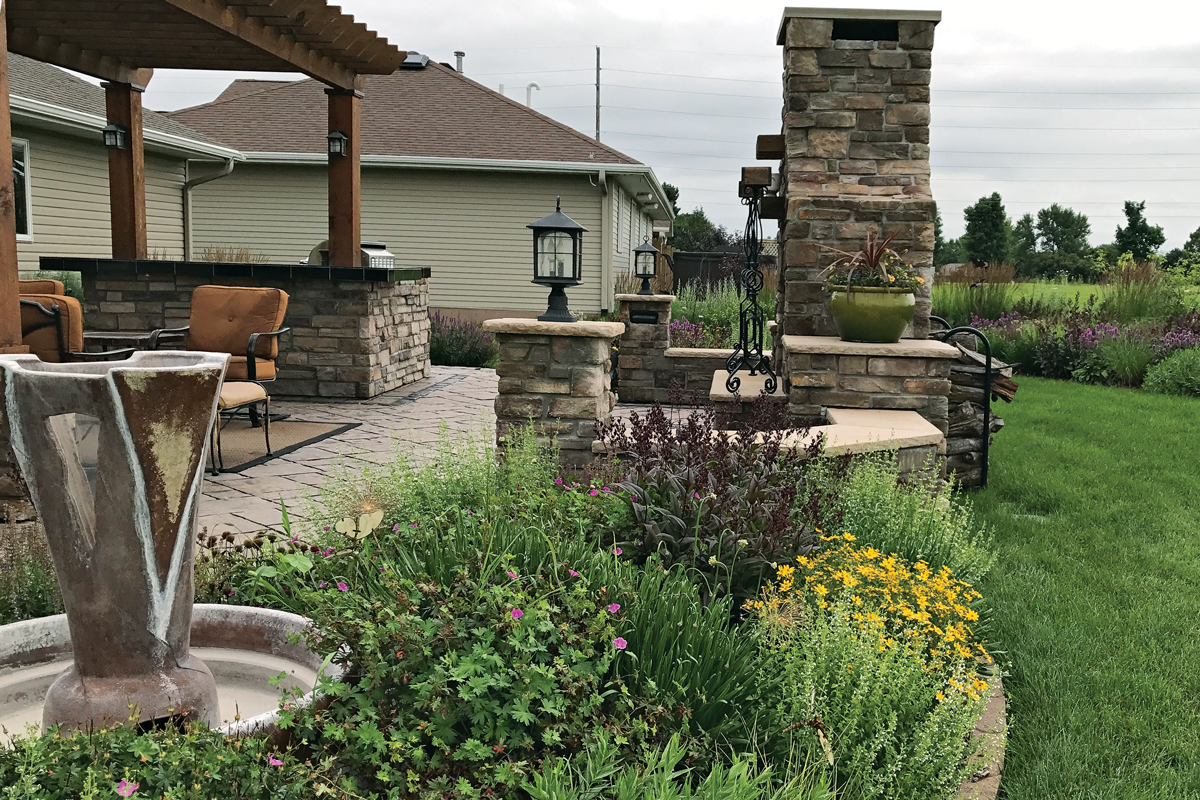
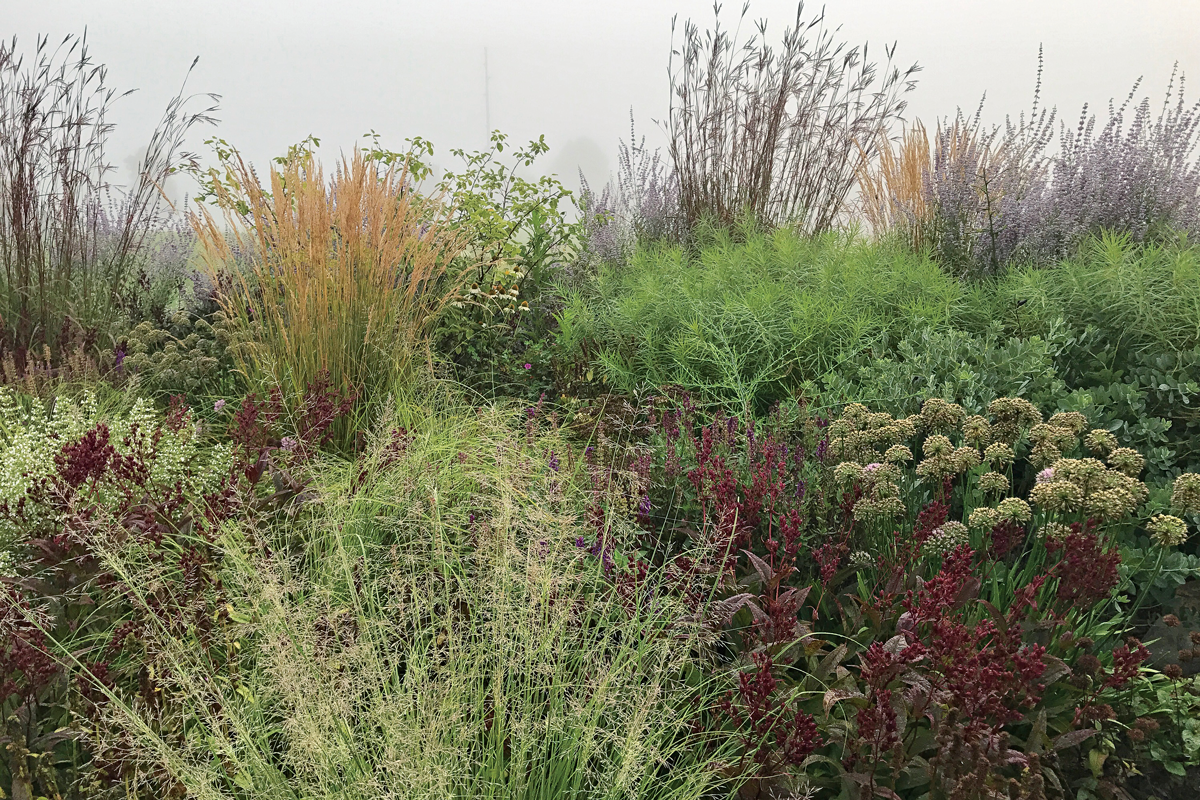
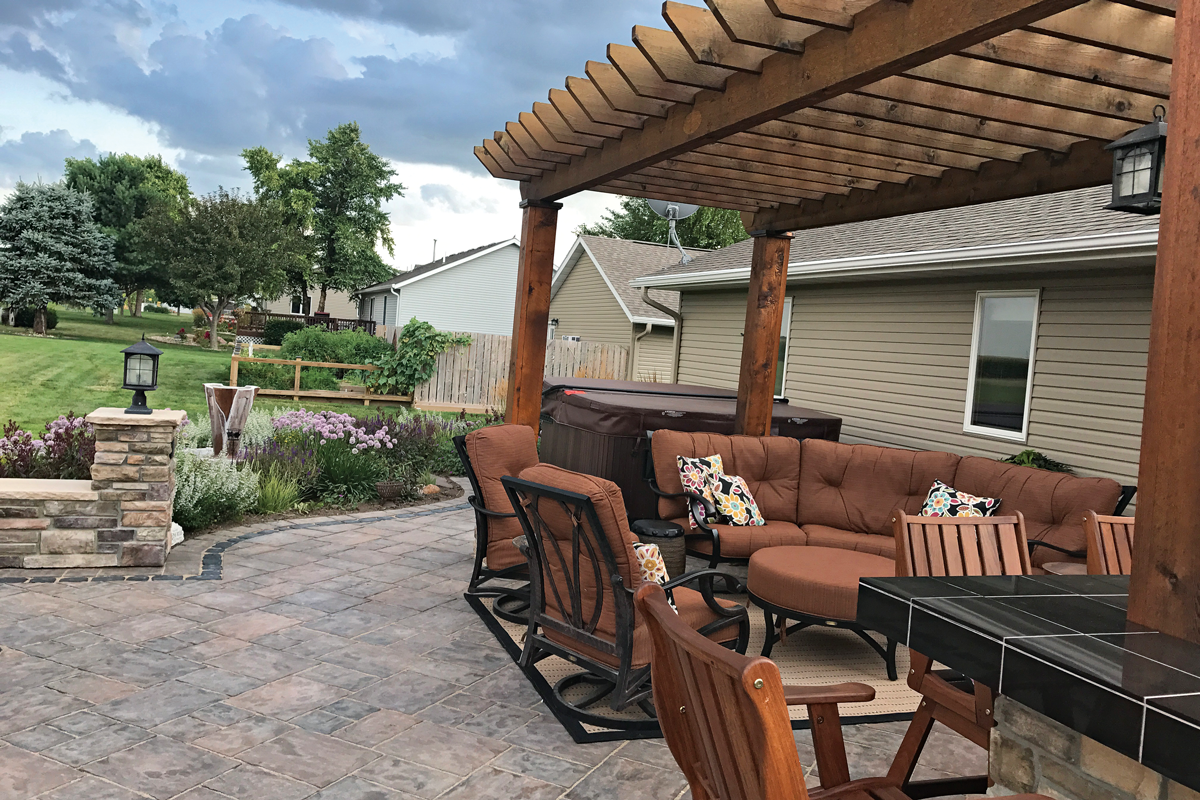
Austin Eischeid owns and operates Austin Eischeid Garden Design, a company based in Chicago.

















Comments
Log in or create an account to post a comment.
Sign up Log in